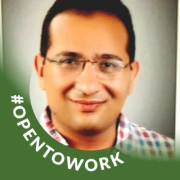We have deployed OpenShift on-premises on VMware and Azure, but not the managed platform. We manage the deployment ourselves, doing our own customizations.
When we look at traditional web development applications, we'll find that the typical release cycle is one and a half to two months. However, given that customers are now deploying new versions of their applications multiple times a day, OpenShift has improved the way our organization develops, tests, and deploys applications. OpenShift stimulates innovation.
OpenShift provides us with the flexibility and efficiency of cloud-native stacks while enabling us to meet regulatory constraints. No matter where we run our container clouds, as long as we use the right tooling such as Knative, we can run our applications everywhere. Red Hat's nicest feature is that it enables us to develop cloud native applications and put them anywhere. We don't have to run our application on OpenShift. We can also run it in a public cloud like AWS or Azure. We can develop on our primary platform (OpenShift) and build with the right tooling in Knative, using MQ streams, and Kafka, allowing us to connect it everywhere.
OpenShift's automated processes have reduced our development time and increased the quality of our end product. OpenShift has come a long way since its early days. While there were some bumps along the way, the last few years have seen major releases with few, if any, significant bugs. Today, OpenShift is a reliable platform that is easy to use. People act differently when they're listening to the community. If we have a feature request, the vendor works with us to make it happen. I've added multiple requests, especially web UI interfaces, and the team has been very helpful. If we have a feature we require and we work with the vendor, we can have it solved within three months.
Depending on the environment Dev Spaces can reduce project onboarding time. If we have to start over from scratch, Dev Spaces can help us set up our development environments quickly. But if we have a running organization with development teams already in place, it can be more difficult to give them Dev Spaces and have them start developing in that way.
When Dev Spaces are used we can bring up a complete OpenShift cluster in under two and a half hours. We have already automated the process. We can launch on OpenShift in less than two and a half hours, completely reconfigured. Using Dev Spaces is definitely worth it if we only have to configure it once. We can have a complete working stack for more than 30 or 40 developers up and running in less than four hours. If we have to do it in the traditional way, it will take 1600 hours. That's 40 hours per application. In Dev Spaces, it takes one click to add a new user and we're done because we have a standard environment.
Dev Spaces helps reduce time to market because our developers can test their applications quickly and easily by developing them directly for Kubernetes or OpenShift.
With Dev Spaces a developer can run the test continuously and start the container test, drop the container, and repeat, saving around 75 percent of the time compared to the traditional way of testing.
I'm a rapid accelerator. I have a lot of contacts in the Netherlands, the USA, and England. It doesn't matter where I am, I can get help from my contacts at Red Hat. As a premium partner, we have sessions every other week to share ideas and knowledge. We are constantly updated about the latest changes that are going to happen in the near future. Our relationship with Red Hat is very good.
We work with Ansible, Satellite, and RHEL itself. We have co-workers and developers who are helping us with the entire Red Hat suite. The integration between the Red Hat solutions is very good. Many integrations are moving to OpenShift. If we look at OpenShift Fuse, it's a Middleware product of Red Hat. It's been running on virtual machines for the last few years. But they are moving to OpenShift. Directing services for maintaining user accounts is a critical part of the integration. The software will run on OpenShift, but not on virtual machines. There are still many integration possibilities. Red Hat develops OpenShift on top of Kubernetes, but also maintains its own applications there, Lenox and Middleware. So, Red Hat will keep it integrated.






Interesting review - although I am not sure what is meant by "There is no orchestration platform in OpenShift." As it is an orchestration platform!